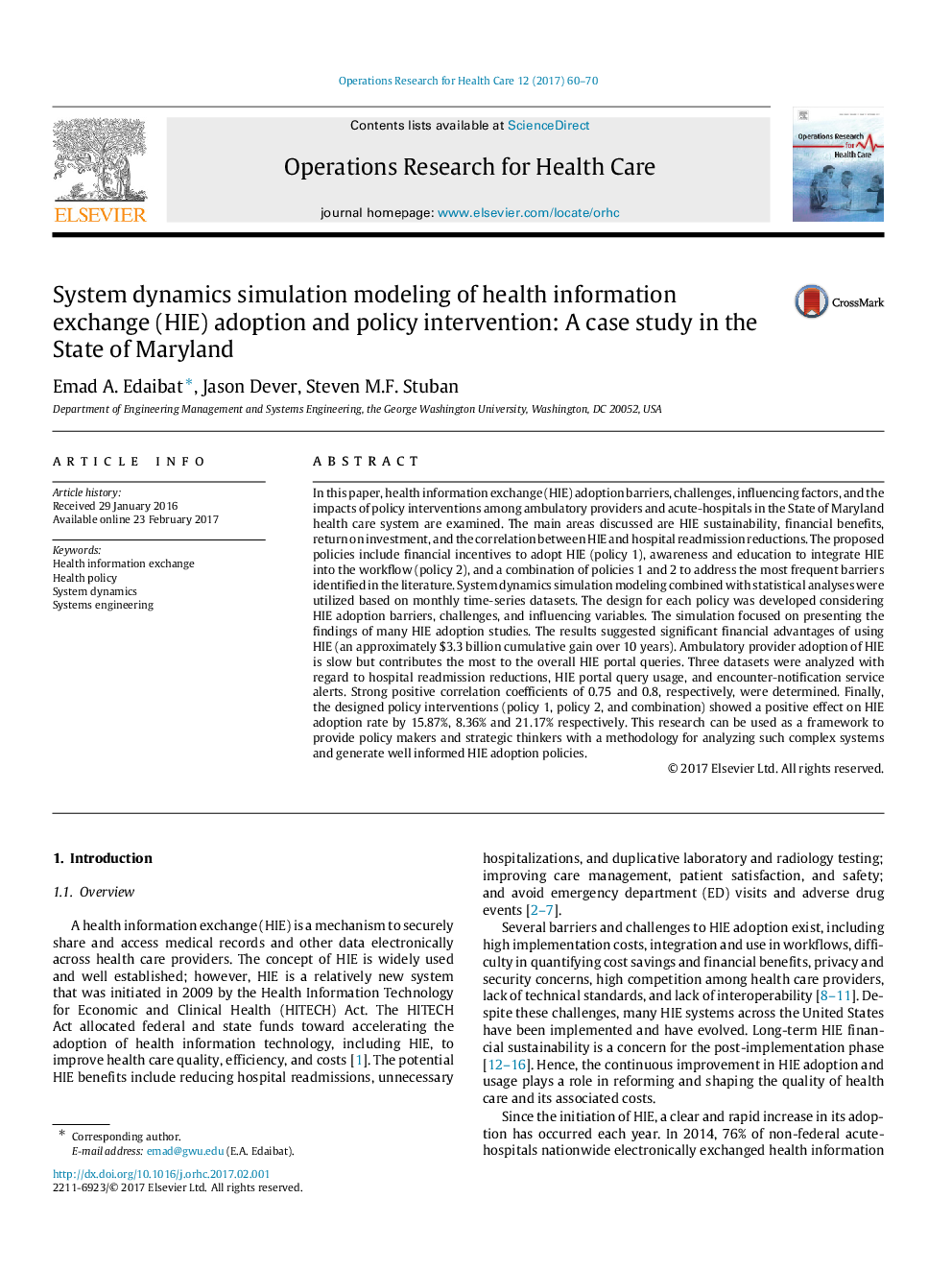| Article ID | Journal | Published Year | Pages | File Type |
|---|---|---|---|---|
| 5128317 | Operations Research for Health Care | 2017 | 11 Pages |
In this paper, health information exchange (HIE) adoption barriers, challenges, influencing factors, and the impacts of policy interventions among ambulatory providers and acute-hospitals in the State of Maryland health care system are examined. The main areas discussed are HIE sustainability, financial benefits, return on investment, and the correlation between HIE and hospital readmission reductions. The proposed policies include financial incentives to adopt HIE (policy 1), awareness and education to integrate HIE into the workflow (policy 2), and a combination of policies 1 and 2 to address the most frequent barriers identified in the literature. System dynamics simulation modeling combined with statistical analyses were utilized based on monthly time-series datasets. The design for each policy was developed considering HIE adoption barriers, challenges, and influencing variables. The simulation focused on presenting the findings of many HIE adoption studies. The results suggested significant financial advantages of using HIE (an approximately $3.3 billion cumulative gain over 10 years). Ambulatory provider adoption of HIE is slow but contributes the most to the overall HIE portal queries. Three datasets were analyzed with regard to hospital readmission reductions, HIE portal query usage, and encounter-notification service alerts. Strong positive correlation coefficients of 0.75 and 0.8, respectively, were determined. Finally, the designed policy interventions (policy 1, policy 2, and combination) showed a positive effect on HIE adoption rate by 15.87%, 8.36% and 21.17% respectively. This research can be used as a framework to provide policy makers and strategic thinkers with a methodology for analyzing such complex systems and generate well informed HIE adoption policies.
